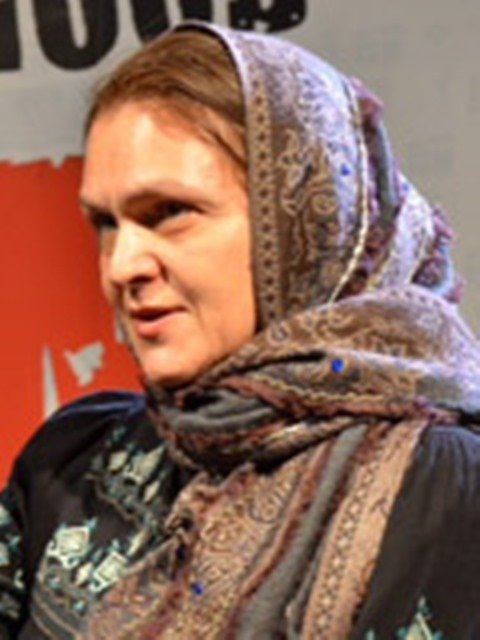Between Georgia and South Ossetia, war-torn families, villages and vineyards
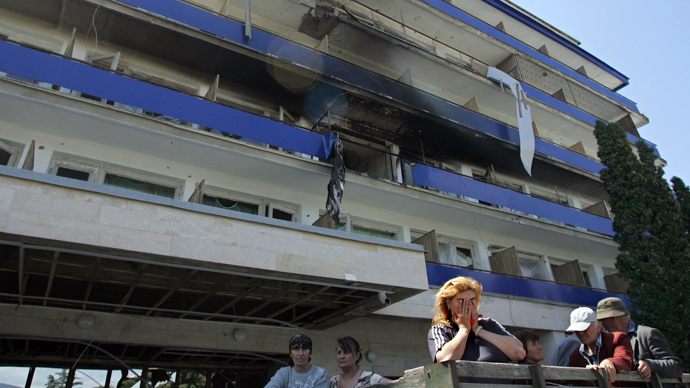
Five years after the Georgian army attacked South Ossetia in the war of August 2008, Georgians living on the wrong side of the border can’t return to the houses they used to live in, and don’t have jobs.
If you stand with your back to the Georgian village of Ditsi, you can see picturesque mountains towering to your right. South Ossetia is behind those mountains. And directly in front of the village, there is a field divided by a green painted fence. The fence is what marks the border between Georgia and South Ossetia, or a small part of the 400-kilometer demarcation line.
Russia says the fence marks the old administrative border, while
Georgia say Russia has moved it 300 meters inside Georgian
territory. The problem is, for the five years after the war there
has been no definite border – there were only checkpoints on
country roads marking points along it.

Now the border is clearly marked, but locals are finding that the border fence runs inconveniently through the middle of all manner of things. Through the middle of cemeteries, through pastures where for centuries shepherds used to take their flocks, and through forests where farmers went to get firewood and gather jonjolee, a mysterious plant which is the hallmark of Georgian cuisine. In some places, the border divides villages, it separates communities from their cemeteries and churches; and in some cases it even goes through people’s homes.
Georgians avoid using the name “South Ossetia,” preferring to call the land “occupied territory.” Patriarch Ilia II (the spiritual leader of the Georgian Orthodox Church and the only Georgian who has raised the question of borders personally with President Vladimir Putin) has avoided the issue by referring only to the city of Tskhinvali (called Tskhinval by South Ossetians).
From the legal point of view, Georgians consider that there is no border, just like there are no diplomatic relations between Russia and Georgia. So as sullen construction workers put up the fence, farmers gaze at it zigzagging through the countryside. Georgian police officers only come once in a while to take a look at the fence; if Georgia were to deploy border guards, this would mean that it recognizes the border as legitimate.
Why the fence is so crooked is anybody’s guess. It was perfectly possible to draw a straight line. But the fence runs through the fields in a complex geometric pattern and disappears over the horizon.
In about 20 yards from the last erected section of the fence, which sways back and forth in the wind, there are a few graves from the 1990s. The relatives of the people buried here live in Ditsi. At this point, it is not clear whether the fence will go around the graves, to keep them on Georgian territory, or whether it will go the other way. A few days after I visited, one of the local farmers called me and said that the fence now separates the graves from the village.
As I view the scene, I am accompanied by a Georgian police officer. He looks sad and doesn’t talk much. Actually, he is a college professor but he volunteered to join the police force – specifically to serve here at the border. He shows me poles with surveillance cameras and night vision cameras. He points out dugouts “on the other side,” which are used as some sort of temporary barracks. He asks me not to approach the border too closely in dangerous spots.
Refugees from Erdevi

In a little grove, a dozen men are sawing an old tree into pieces for firewood. They are all refugees from the Georgian village of Erdevi in South Ossetia. They fled here and settled in Ditsi. Some of them bought shacks and made them into houses; others live in rented houses. Their village no longer exists; Erdevi was burned to the ground in the war.
Vasily Beruashvili is 65. When he was young, he was a Soviet Air Force pilot in Odessa. Today, Odessa is a Ukrainian city. Vasily had several orchards and a field in Erdevi, two acres of land. Merab Midotashvili, 46, had three acres of land and an orchard. Badri Beruashvili, 41, had an orchard and two acres of land.
Vasily, Merab and Badri say their village was first shelled, and then they were driven out of their village and their houses were torched. I ask them whether they still have papers for their houses and property. Vasily shakes his head: “What are you talking about? We had to flee right then. We were barely able to save our children. There was no time to think about things like papers or keys.”
In South Ossetia, nobody has offered them any compensation for their land or homes. Those who had some money have purchased a place to live on the Georgian side; others have to rent a room, and work for board and lodgings.
Badri interjects that the Georgian government has offered some
support: “The government helps us a little. They pay 24 lari
($15) a month per person. At first, they also sent us some food.
Some people have received cottages from the government. They had
a closet and a table.”
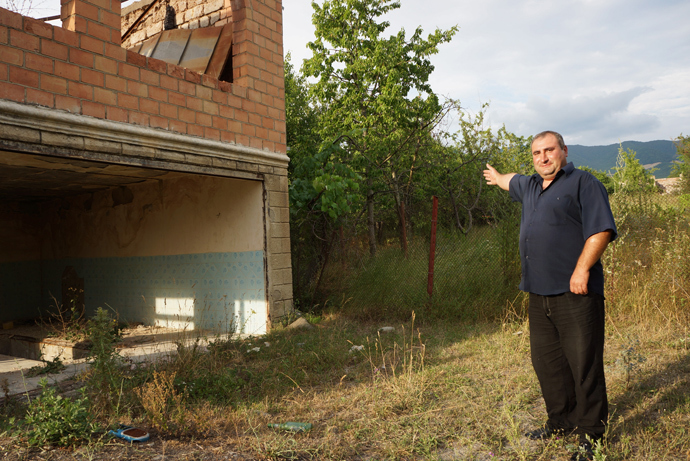
There are approximately 500,000 refugees in Georgia; 33,000 people were displaced by the 2008 war, while others were forced out of their homes by earlier conflicts.
Their comments about the Ossetians are, surprisingly, not negative. Vasily’s daughter-in-law is Ossetian. “When we fled, she came with us,” he says. “She lives with us today. She’s a good woman. She can only talk to her brothers by phone now. She can’t see them. She is Ossetian but she can’t go there to visit her family. Border guards won’t let her go – their border guards. A neighbor of ours tried going there and was arrested at the border.”
The neighbor was kept in Tskhinvali four days after his arrest. He came back home scared to death, and refuses to say what happened to him, Vasily says.
When Vasily talks about the people who drove them out of their village, the people putting up the fence, and the people arresting them at the border, he always calls them Russians. “I can’t talk to them. They are armed, I can’t ask them anything. To us, they are Russians.”
“But I am also Russian, and you’re talking to me. Or do you hate me, too?” I ask him.
“We don’t hate anybody,” Vasily says. “We don’t hate women; we don’t hate men. It is not people’s fault. It is the fault of our former ruler and their leaders over there.”
A house divided
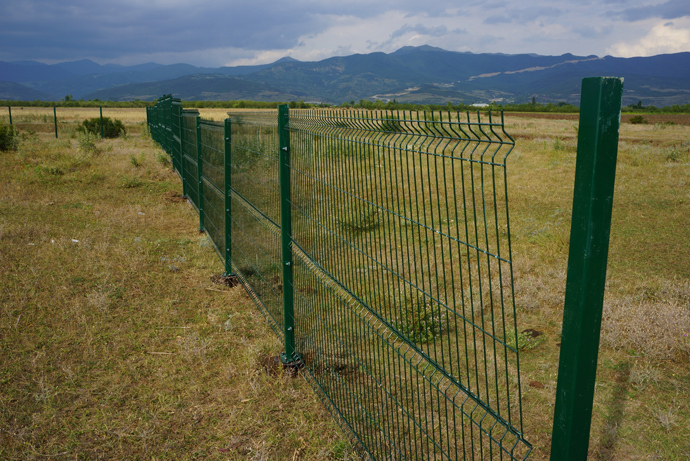
In this village houses are empty, and trees are abandoned. Levan brings me some apricots from his beautiful garden; he’s too scared to give me an interview, he’s scared to lose his job, and he’s scared that things can get even worse.
“This used to be my garden,” he says, looking at his vineyard, his vines all covered with waist-high grass. “Look, do you see barbed wire over there? There’s an Ossetian house behind it. And here they set up the barbed wire border right through my house. They cut my house in half. Why?”
This is a two-storied house, built for a big family. Levan says his grandfather started building it, and his father continued. It was a labor of love, designed to withstand the ages, he says. But now all he can do is to come here and look at the ruins. He failed to save the Georgian cross that used to hang on the wall, and he failed to save the house itself.
“You see over there, behind the barbed wire, there used to be a Georgian school. It was the first building to be demolished. My grandfather was building it for 25 years; we just needed to do some interior finishing. Now we live over there,” he says, pointing toward Georgian territory. “They temporarily gave us a room in the school. There are seven of us living there. My whole family…”
I asked him whether he tried to persuade the border guards not to divide the house.
“It’s impossible to talk to them,” Levan says. “They come with barbed wire and do what they want.”
In one place, the fence was constructed smack through the middle of his grandfather’s vineyard; they just took the wire out of the wooden espaliers that used to support the vines.
“They took my wire and built their border,” Levan says. “Just like in that movie, ‘Father of a Soldier.’ You remember?”
I do, of course, as people in both Russia and Georgia love this film. It’s a black-and-white, Soviet-era drama, filmed 50 years ago. It’s about an old Georgian man who is looking for his son during World War II and telling a tank crewman how to grow the vines. Everybody in Georgia, one of the world’s oldest wine-growing countries, knows this movie off by heart.There’s even a new, colorized version of this movie now, and you can now watch it on TV.
I wonder what would happen if TV would show could see this vineyard. Would governments still insist that the border runs through the middle of it?
A Georgian cut off from Georgia
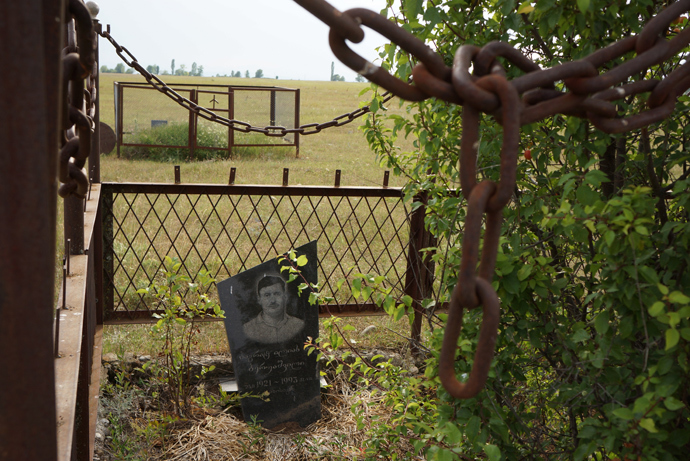
As I stand on the border, between me and an elderly couple are four lines of barbed wire. I stretch my hand through it to shake the hand of the man standing opposite me. He’ll be turning 80 soon. A Georgian by birth and citizenship, he’s been cut off from his native country since last spring.
He asks to remain anonymous. His elderly wife tells him to step aside from the barbed wire. If someone spots him here, it could mean trouble, she says.
The old man tells me: “They took me to Tskhinvali and told me never to talk to journalists, no matter where they come from – Russia, Georgia or Ossetia. Don’t come close to the fence, they said. Step 10 meters aside and talk over the phone, they told me.”
With irony, he notes that his phone is still connected to a Georgian network.
“Sometimes they barge in to check my papers,” he says. “I haven’t got any, except for my Georgian passport.”
He still receives his pension in lari, the Georgian currency. But they don’t accept lari in his local store.
“Tea and dry bread, that’s my menu,” he says. “I’ve got a wife and a grandson. He’s 24.”
The old man has two daughters. One is married and lives in a village in Georgia.
“Neither she nor her children are allowed to cross it, so I can only see and talk to her through the wire. My second daughter lives in Ordzhonikidze,” he says, using the pre-1991 name for the city now called Vladikavkaz, the capital of North Ossetia, in Russia.
(Even the city’s name is politically sensitive for Georgians and Ossetians: It was named for Sergo Ordzhonikidze, a leading Georgian Bolshevik who led the Soviet invasion of Georgia in 1921. He later committed suicide in 1937, at the height of Stalin’s purges.)
The old man can’t cross the border from South Ossetia to North Ossetia to visit her, either – his Georgian passport is the problem.
“I’m like in a prison – they pass me bread through the fence. How can I survive? Tell them about it,” he says.
He and his family are the only residents left in the village. A neighbor on the Georgian side left for Gori, the nearest town, because his garden turned out to be on the South Ossetian side of the border.
“He once came here from Gori and asked me to pick up the fruit left over in his garden,” says the old man. “I took the bag, collected what was still left there and gave it to him over the fence. He’s not allowed here. All around are empty homes. My brother died. My mother, my father and brother are buried in Gori. But the Russians won’t let me go there.”
He watches three border guards with guard dogs walking across his cornfield every day – morning, afternoon and evening.
“They say, ‘If we catch you, we’ll throw you into a Russian jail, not here in Tskhinvali. You won’t ever taste local water again.’”
The supreme irony is that the 2008 war was never actually fought here, on this land, he says.
“It’s part of South Ossetia, they say. How on earth can it be South Ossetia? I built my house 33 years ago here. I’ve been living here for 80 years now. It’s been part of Gori for 80 years, and now it’s South Ossetia all of a sudden. If a chicken or pig sneaks under the fence, it’s gone for good. How am I supposed to go looking for it?”
The old man says he’s been offered a South Ossetian passport, but he declined.
Dreams of reconciliation
In the village of Gugutiankari, there’s no fence across the
meadows – just a stream marking the border. But it’s best not to
cross it, says an old farmer who lives on the Georgian side.
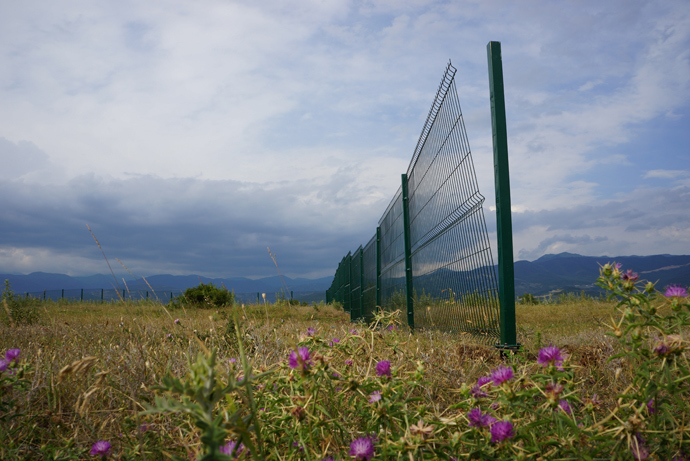
“We used to have a church. Now it’s beyond the border,” he says. “We are farmers, and they are farmers. We are Christians, and they are Christians. But our priest isn’t allowed to go there.”
Shepherds who cross the stream have been fined 5,000 rubles ($160), the farmer says.
The farmer says villagers would welcome reconciliation with South Ossetia.
“The houses were burnt so that people would not return. The pastures are gone. There’s no central water system any longer. And you’ve got those Russian border guards walking along the hill. What are they doing there? Who are they guarding and against whom? It seems that Christians are guarding Christians against Christians."
Another man sums up the general feeling of the villagers.
“Will Russia make peace? We’d love to heal the breach, and we will if they don’t get in our way.”
The statements, views and opinions expressed in this column are solely those of the author and do not necessarily represent those of RT.
The statements, views and opinions expressed in this column are solely those of the author and do not necessarily represent those of RT.
